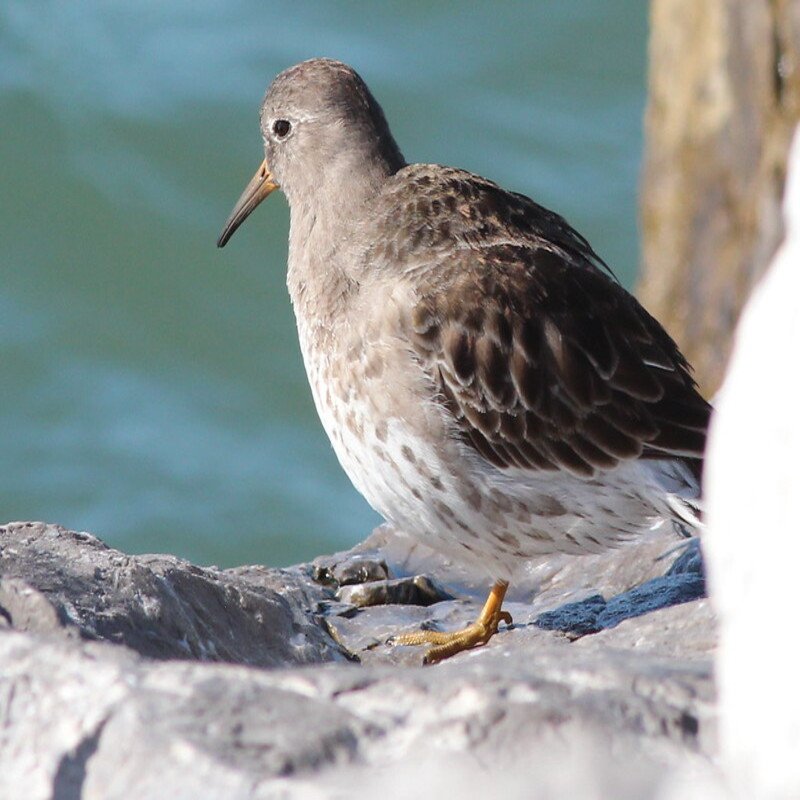Calidris maritima (purple sandpiper) is a tiny shorebird in the sandpiper family Scolopacidae. This resilient sandpiper breeds in Eurasia and North America’s arctic and subarctic regions and winters further south along the Atlantic coast.
Quick Overview: Calidris Maritima – Purple Sandpiper
Body size: Around 9 in (23 cm) and a weight of 77g (2.7 oz)
Main colors: Gray, Orange, White
Range: Eastern United States
Migratory Bird: Yes
Best time of the year to see in the U.S.: January, February, December
Conservation Status: Least Concern
Purple Sandpiper Description
Purple sandpipers are medium-sized waders that are larger, stockier, and darker in color than dunlins. It is predominantly dark gray on top and pales on the bottom. Its beak is bent downward and its legs are short and brilliant orange. When it flies, it exhibits a fine white wing-stripe.

Size
These birds have a length of 9 in (23 cm) and a weight of 77 g (2.7 oz). Their wings could range from 17 in (43 cm).
Feeding
Purple sandpipers are molluscivores by nature, but they also consume insects and algae. They are mostly voracious eaters of winkles, mussels, dog pups, and marine snails. Purple sandpipers feed on larvae, pupae, and adult kelp flies during high tide when the waves cover the molluscs. Additionally, they feed on crustaceans, annelids, spiders, and aphids, as well as seeds, leaves, and berries.
Habitat
Purple sandpipers breed near sea level in the High Arctic, whereas those in the Low Arctic breed inland and at heights greater than 1000 m. They eat in the tundra’s rocky intertidal zones. They can be found on rocky coastlines during migration, and their preferred winter habitat is rocky shores or sandy beaches.
Behavior
Walking, hopping, flying, and swimming are all forms of locomotion. Purple sandpipers are nimble when foraging on intertidal rocks. They can be spotted swimming along the coasts during the non-breeding season, foraging for mussels and other aquatic invertebrates. Chicks will also swim to forage, led by the male. Except during migration, they are slow fliers who generally flutter over rocks. When they do fly, they do it with rapid and powerful wing beats.
Calidris Maritima Scientific Classification
- Kingdom: Animalia
- Phylum: Chordata
- Subphylum: Chelicerata
- Class: Aves
- Order: Charadriiformes
- Family: Scolopacidae
- Genus: Calidris
- Species: Calidris maritima
Best time of the year to see
The best time to see these birds in the United States is during the winter season (December to February).
Distribution of the Purple Sandpiper in the USA
During the fall and winter months, this species is found along the Atlantic Coast’s rocky shorelines. Winter ranges from Quebec to South Carolina, although it is rarely seen as far south as Florida.
The Purple Sandpiper can be found in the following states in the United States – Wisconsin, Indiana, Ohio, New York, Vermont, New Hampshire, Maine, Massachusetts, Rhode Island, Connecticut, New Jersey, Delaware, Maryland, Virginia, North Carolina, Oklahoma, and Louisiana.
